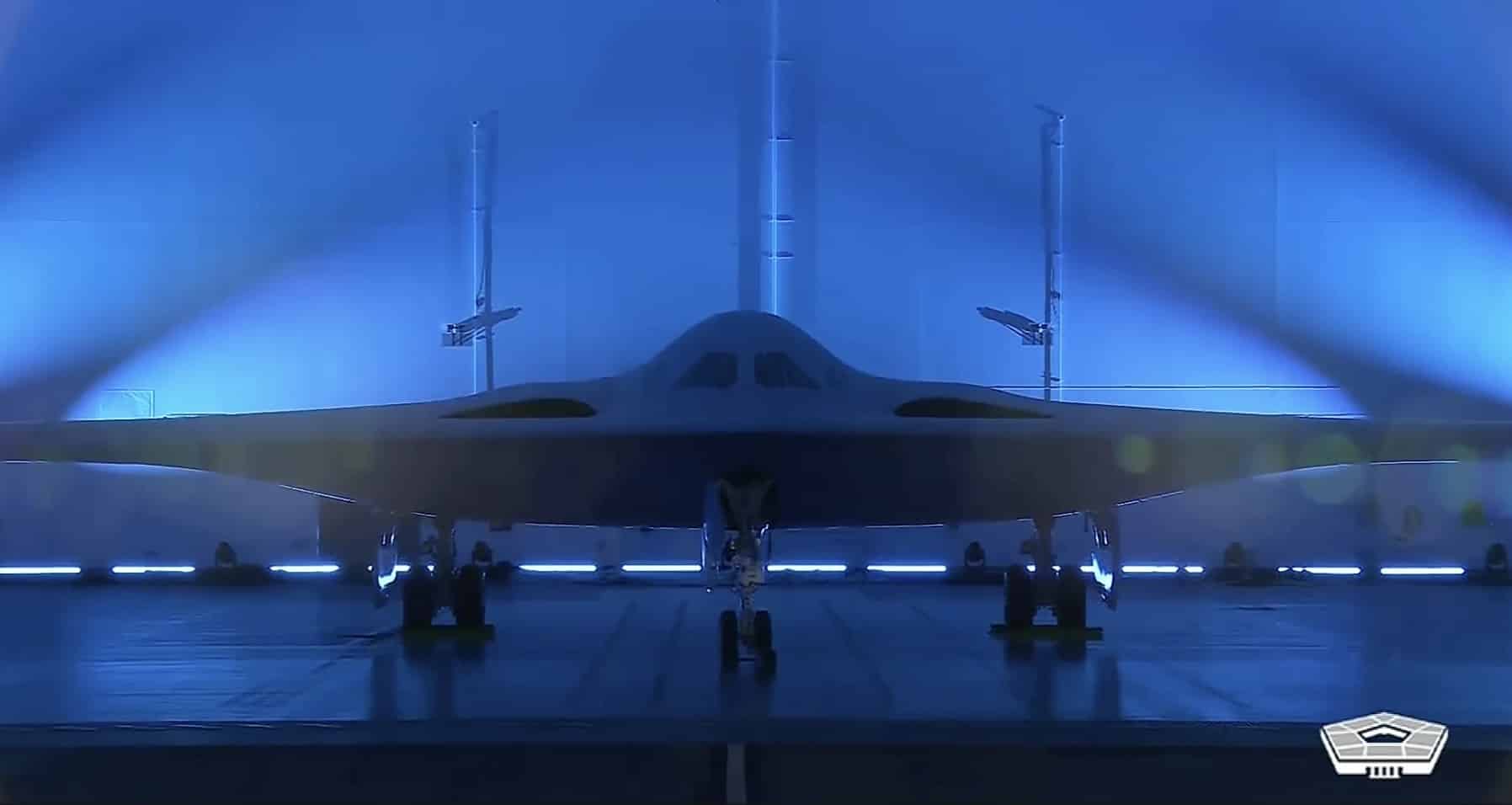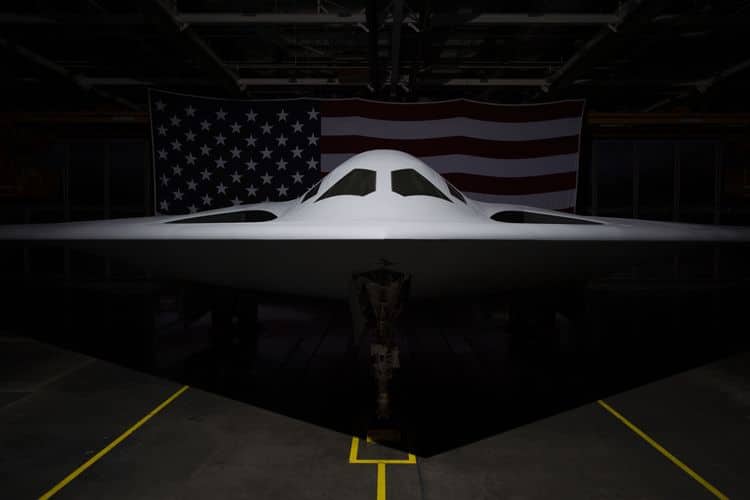F-22Raptor
ELITE MEMBER

- Joined
- Jun 19, 2014
- Messages
- 16,971
- Reaction score
- 3
- Country
- Location
Northrop Grumman Corporation (NYSE: NOC) and the U.S. Air Force unveiled the B-21 Raider to the world. A marvel of advanced digital manufacturing technologies across the entire spectrum, the B-21 joins the nuclear triad as a visible and flexible deterrent designed for the U.S. Air Force to meet its most complex missions. It is no secret that Northrop Grumman has put additive manufacturing at the top of its list of key enabling technologies. It is at the heart of the company’s advanced manufacturing strategy and its investments in the AM field have continued to grow, topping $70 million just for parts acquired from external suppliers.
To be clear, Northrop Grumman’s use of 3D printing dates back to long before this program and the relative scale-up of AM adoption. In fact, the company was among the very first to implement AM for rapid prototyping shortly after the technology was invented. Boris Fritz, who headed the Rapid Prototyping Lab at Northrop Grumman for 17 years, started it in 1991 and worked on the first major application with Ed Hobart: a high lift wing wind tunnel model, produced using stereolithography, which reduced the cost from $450,000 down to $12,000 (and goth them the first of four world excellence awards in the early AMUG shows).
The B-21 program is super secretive. Since the contract award in 2015, Northrop Grumman has assembled a nationwide team to design, test and build the world’s most advanced strike aircraft. The B-21 is a product of Northrop Grumman’s pioneering digital engineering practices and advanced manufacturing techniques together with breakthrough stealth technology.
“We have been flying additive[ly] manufactured parts since 2005. We have around 5,000 3D printed parts altogether in our air vehicles”, said Eric Barnes, Northrop Grumman Fellow for Additive Manufacturing, not long ago. During his 32 years tenure at the company, Mr. Barnes has led the development, implementation and strategy for polymer and metallic additive manufacturing on multiple air and space vehicles, leveraging over 36 years of experience in materials, processes and manufacturing research and development, implementation, design, and production support with particular expertise in Composite structures for aerospace applications.
The Raider was developed to provide the US Air Force with long-range, high survivability and mission payload flexibility. In order to do so, the B-21 Raider will have to be able to penetrate the toughest defenses for precision strikes anywhere in the world. These advanced stealth capabilities are made possible by advanced manufacturing as Northrop Grumman is continuously advancing technology, employing new manufacturing techniques and materials to ensure the B-21 will defeat the anti-access, area-denial systems it will face
Advanced manufacturing, involves materials that have been designed to meet specific objectives. For example, in some situations, you may need a durable material, while in others, you may prioritize flexibility. In aerospace, engineers evaluate materials based on many factors, such as the ability to handle extreme temperatures and electrostatic discharge.

“We are now using five different additive manufacturing materials in our products – more when considering tooling,” says Barnes. He added that they are investigating additional materials that can’t yet be announced. These materials include ESD PEKK, 3D printed via HexAM, a modified SLS technology on EOS machines, made available by Hexcel. ESD PEKK enables the production of electrically dissipative parts with discontinuous carbon fibers, something that is particularly useful in aircraft that cannot dissipate electrostatics into the ground.
Engineers have a variety of options depending on their program’s requirements. “The choice of material depends on the requirements and the cost-benefit,” Barnes says. He also explained that polymers are a cost-effective option for many applications, but in scenarios such as supersonic aircraft that get hotter than 300 degrees Fahrenheit, a metal such as titanium is often the right choice.
Another important aspect of advanced manufacturing is the digital component. The B-21 is considered a “digital bomber”. To build it, Northrop Grumman uses agile software development, advanced manufacturing techniques and digital engineering tools to help mitigate production risk on the B-21 program and enable modern sustainment practices. Six B-21 Raiders are in various stages of final assembly and test at Northrop Grumman’s plant in Palmdale, California, which means they are manufactured on US soil.
“The Northrop Grumman team develops and delivers technology that advances science, looks into the future and brings it to the here and now,” said Kathy Warden, Chair, Chief Executive Officer and President, Northrop Grumman. “The B-21 Raider defines a new era in technology and strengthens America’s role of delivering peace through deterrence.”
From 3D printing rocket motors to using advanced materials to produce aircraft parts, the company uses AM across the enterprise, having invested more than $70 million in AM with more than 5,000 AM parts currently integrated into the company’s aeronautic platforms, all produced by small- and medium-sized suppliers and partners. The company also currently collaborates with several universities and colleges.

 www.voxelmatters.com
www.voxelmatters.com
To be clear, Northrop Grumman’s use of 3D printing dates back to long before this program and the relative scale-up of AM adoption. In fact, the company was among the very first to implement AM for rapid prototyping shortly after the technology was invented. Boris Fritz, who headed the Rapid Prototyping Lab at Northrop Grumman for 17 years, started it in 1991 and worked on the first major application with Ed Hobart: a high lift wing wind tunnel model, produced using stereolithography, which reduced the cost from $450,000 down to $12,000 (and goth them the first of four world excellence awards in the early AMUG shows).
The B-21 program is super secretive. Since the contract award in 2015, Northrop Grumman has assembled a nationwide team to design, test and build the world’s most advanced strike aircraft. The B-21 is a product of Northrop Grumman’s pioneering digital engineering practices and advanced manufacturing techniques together with breakthrough stealth technology.
“We have been flying additive[ly] manufactured parts since 2005. We have around 5,000 3D printed parts altogether in our air vehicles”, said Eric Barnes, Northrop Grumman Fellow for Additive Manufacturing, not long ago. During his 32 years tenure at the company, Mr. Barnes has led the development, implementation and strategy for polymer and metallic additive manufacturing on multiple air and space vehicles, leveraging over 36 years of experience in materials, processes and manufacturing research and development, implementation, design, and production support with particular expertise in Composite structures for aerospace applications.
The Raider was developed to provide the US Air Force with long-range, high survivability and mission payload flexibility. In order to do so, the B-21 Raider will have to be able to penetrate the toughest defenses for precision strikes anywhere in the world. These advanced stealth capabilities are made possible by advanced manufacturing as Northrop Grumman is continuously advancing technology, employing new manufacturing techniques and materials to ensure the B-21 will defeat the anti-access, area-denial systems it will face
Advanced manufacturing, involves materials that have been designed to meet specific objectives. For example, in some situations, you may need a durable material, while in others, you may prioritize flexibility. In aerospace, engineers evaluate materials based on many factors, such as the ability to handle extreme temperatures and electrostatic discharge.

“We are now using five different additive manufacturing materials in our products – more when considering tooling,” says Barnes. He added that they are investigating additional materials that can’t yet be announced. These materials include ESD PEKK, 3D printed via HexAM, a modified SLS technology on EOS machines, made available by Hexcel. ESD PEKK enables the production of electrically dissipative parts with discontinuous carbon fibers, something that is particularly useful in aircraft that cannot dissipate electrostatics into the ground.
Engineers have a variety of options depending on their program’s requirements. “The choice of material depends on the requirements and the cost-benefit,” Barnes says. He also explained that polymers are a cost-effective option for many applications, but in scenarios such as supersonic aircraft that get hotter than 300 degrees Fahrenheit, a metal such as titanium is often the right choice.
Another important aspect of advanced manufacturing is the digital component. The B-21 is considered a “digital bomber”. To build it, Northrop Grumman uses agile software development, advanced manufacturing techniques and digital engineering tools to help mitigate production risk on the B-21 program and enable modern sustainment practices. Six B-21 Raiders are in various stages of final assembly and test at Northrop Grumman’s plant in Palmdale, California, which means they are manufactured on US soil.
“The Northrop Grumman team develops and delivers technology that advances science, looks into the future and brings it to the here and now,” said Kathy Warden, Chair, Chief Executive Officer and President, Northrop Grumman. “The B-21 Raider defines a new era in technology and strengthens America’s role of delivering peace through deterrence.”
From 3D printing rocket motors to using advanced materials to produce aircraft parts, the company uses AM across the enterprise, having invested more than $70 million in AM with more than 5,000 AM parts currently integrated into the company’s aeronautic platforms, all produced by small- and medium-sized suppliers and partners. The company also currently collaborates with several universities and colleges.

How AM helps Northrop Grumman build the new B-21 Raider
How AM helps Northrop Grumman build the new B-21 Raider, the first sixth-generation bomber is a marvel of advanced digital manufacturing
